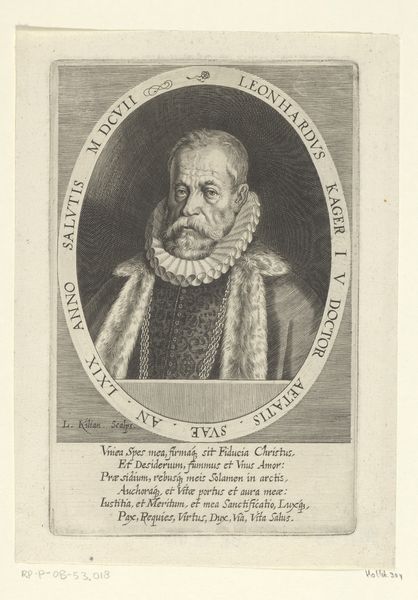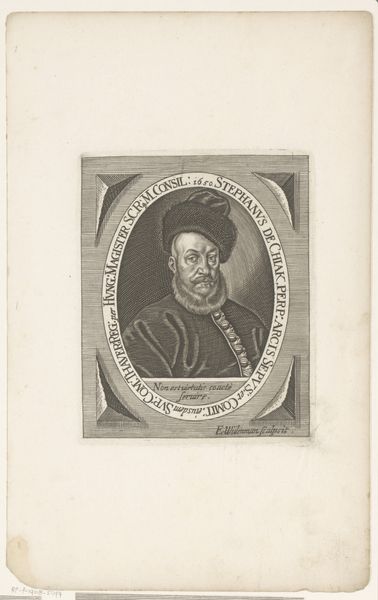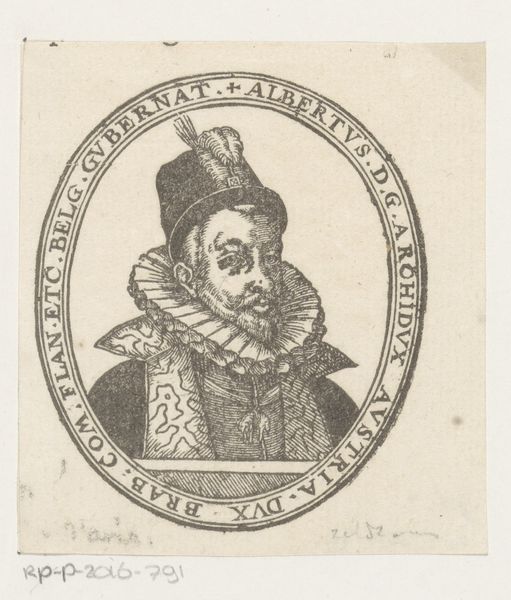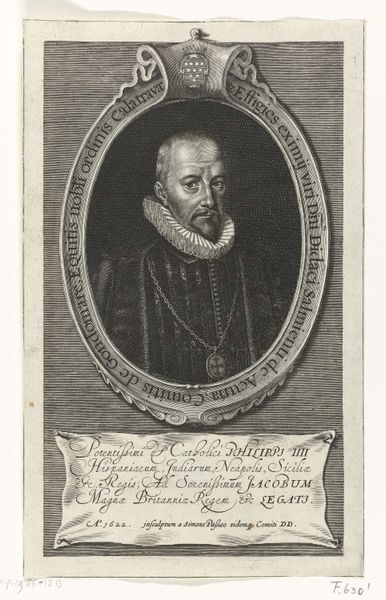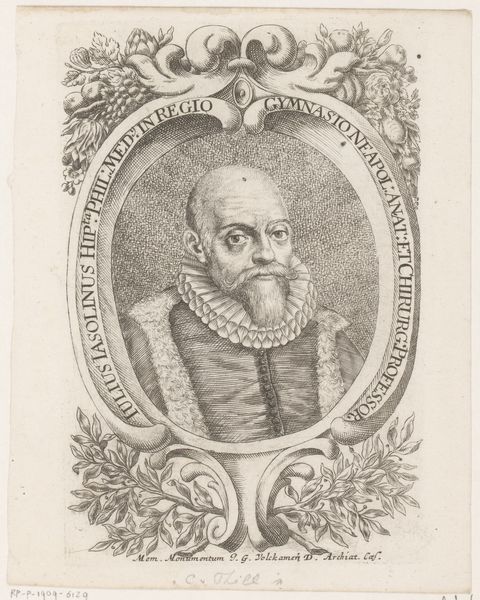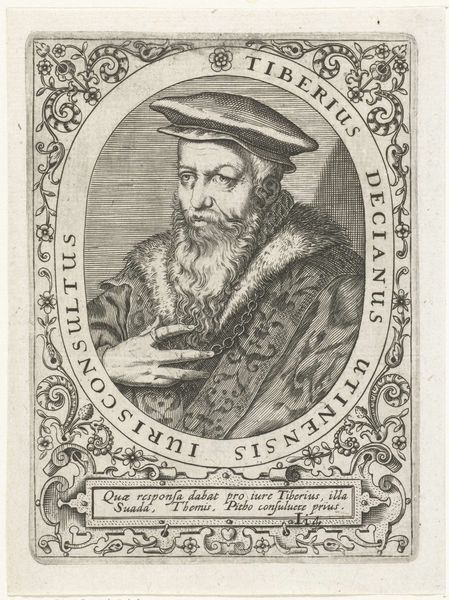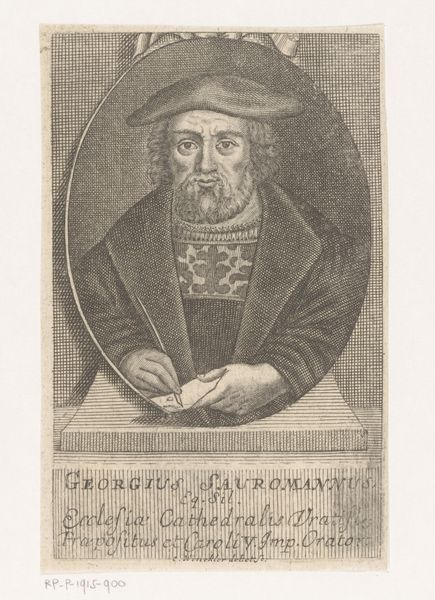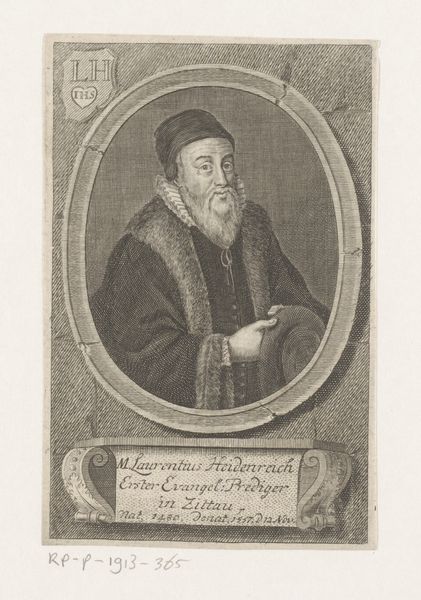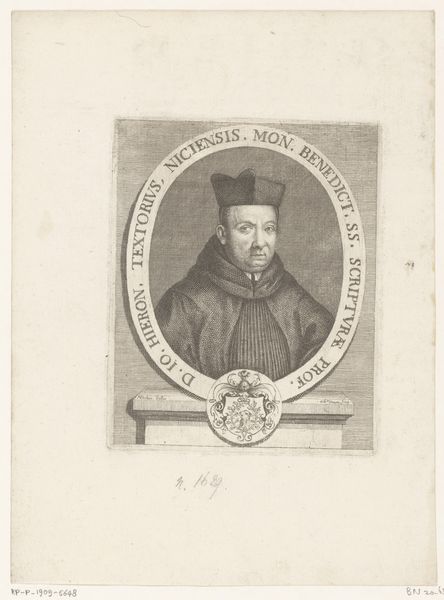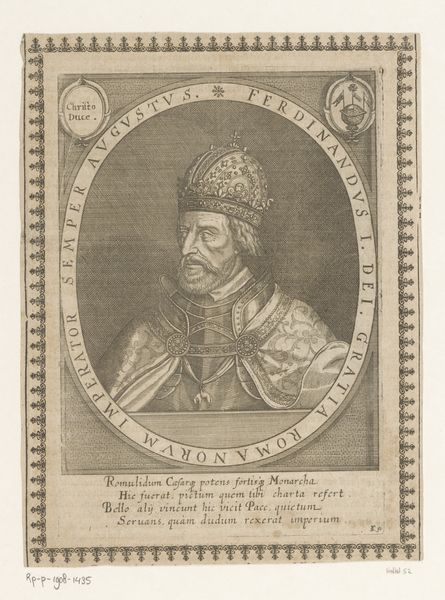
print, engraving
#
portrait
#
baroque
# print
#
old engraving style
#
history-painting
#
engraving
Dimensions: height 156 mm, width 99 mm
Copyright: Rijks Museum: Open Domain
Editor: We're looking at a print entitled "Portret van Filips II, koning van Spanje," made sometime between 1593 and 1614 by Thomas de Leu. It’s an engraving, and the level of detail the artist achieved is astounding! What’s particularly striking is Philip II’s gaze. What story do you think this artwork tells? Curator: It's a powerful image, indeed. Considering the historical context, this portrait of Philip II speaks volumes about power, representation, and the construction of identity in the late 16th and early 17th centuries. What does it mean to portray this ruler in a moment of growing global power struggles? How did the printing press influence and affect social structure? Editor: I hadn’t thought of the role the printing press might have played. How did the choice of medium, engraving, impact its reception at the time? Curator: Engravings like these facilitated the dissemination of specific imagery of power, and we must critically evaluate whose stories they amplified and whose they silenced. This image participated in carefully crafting and maintaining the image of the Spanish monarchy amidst complex political and religious tensions. Consider how details such as his attire, expression, and even the inscription work together to construct a narrative of strength and legitimacy, masking many layers of colonialism and violence that came with the creation of his identity and monarchy. Editor: It’s fascinating to think about the many stories a single portrait can hold – not just of the subject, but also of the society that created it and how the context of the printing press relates to the world. Curator: Precisely. By exploring the social and historical forces that shaped this portrait, we can better understand its ongoing relevance in contemporary discussions about representation, power, and identity. Editor: I see so many more dimensions now, considering power and colonialism as core components. Thank you for sharing your insights.
Comments
No comments
Be the first to comment and join the conversation on the ultimate creative platform.
